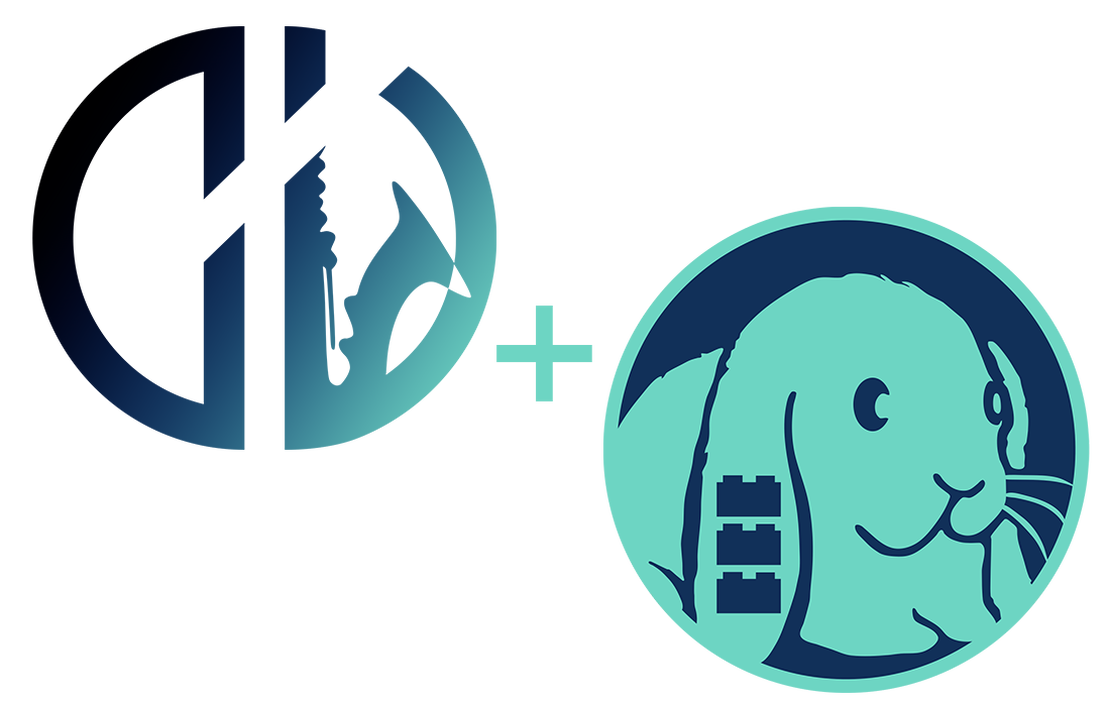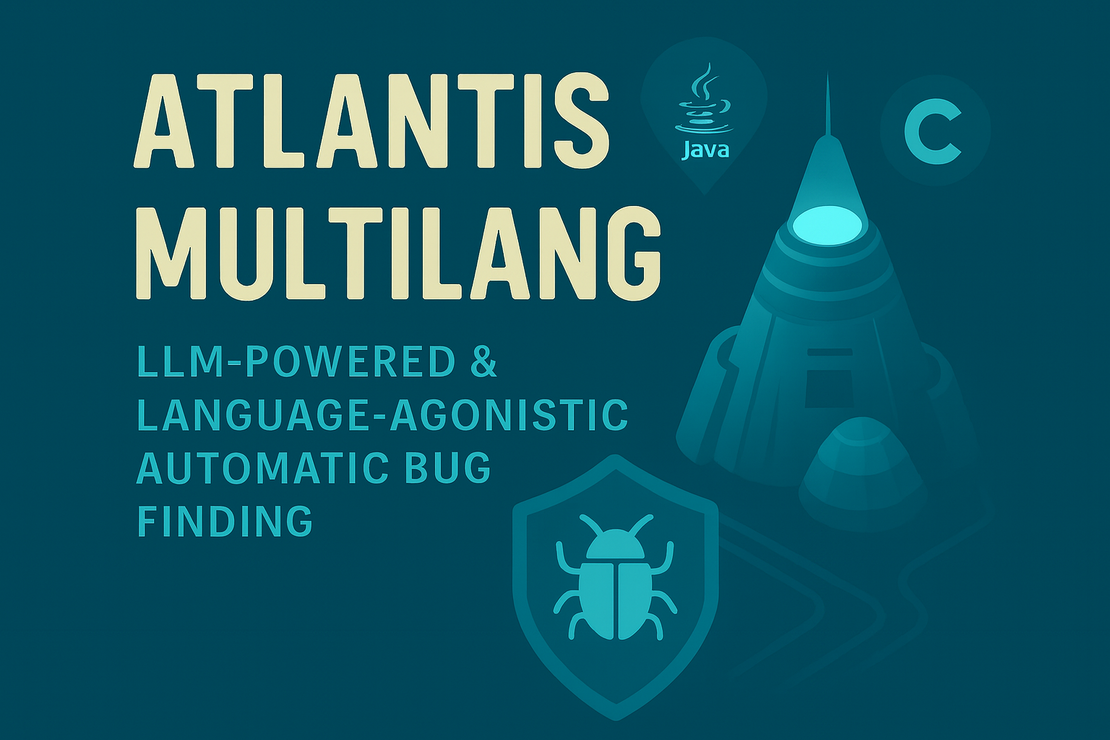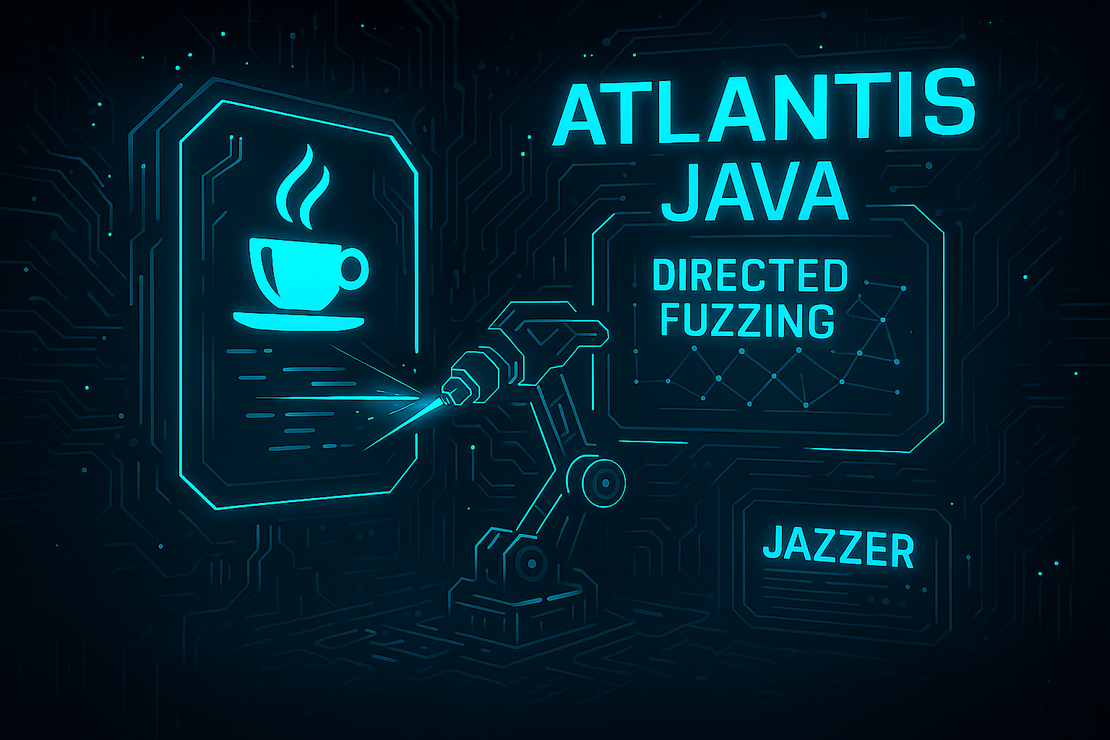
Jazzer+LibAFL: Insights into Java Fuzzing
- Ammar Askar
- Atlantis java
- August 19, 2025
Table of Contents
AIxCC involved finding bugs in software written in two languages: C++ and Java. The focus of the competition was on the use of LLMs and AI, however, our teams approach was to balance ambitious strategies alongside proven traditional bug-finding techniques like fuzzing. While our team was deeply familiar with fuzzing C++ from decades of academic research and industry work, Java was uncharted territory for us. In part of our Java fuzzing development we created a fork of Jazzer that uses LibAFL as the fuzzing backend and it is available as part of our open source release. This post details some of the lessons we learned about Java fuzzing and the creation of this fork.
DARPA chose Jazzer as their baseline fuzzer and sanitizer framework for Java challenges.
Jazzer
Jazzer is an open-source Java Fuzzer developed by the Code Intelligence company. It makes use of LibFuzzer (written in C++) using the Java Native Interface (JNI). The architecture of Jazzer is roughly:
Jazzer begins by using the JNI to make a call to LLVMFuzzerRunDriver which is LibFuzzer’s
recommended way of using it as a library.
This starts the C++ fuzzing loop inside libFuzzer where Jazzer’s stub fuzz driver
fuzz_target_runner.cpp implements a testOneInput method. This method is very
simple and uses the JNI to
call to a private static int runOne(long dataPtr, int dataLength) in Java.
From here, Jazzer takes the void* input from LibFuzzer and converts it into
the appropriate type before handing it off to the Java fuzzing entrypoint such
as fuzzerTestOneInput(byte[] input).
On the Java side of things, Jazzer makes use of the JaCoCo
code coverage library and ASM to inject instrumentation
hooks into the program’s edges. These coverage tracking hooks insert a call to
the recordCoverage(int id) method in CoverageMap.java. Jazzer here uses the
UNSAFE.putByte function from sun.misc.Unsafe
to directly write the edge into the coverage map memory location.
LibFuzzer makes use of the LLVM Sanitizer Coverage
(SanCov) API to receive coverage feedback. Jazzer hooks into this system by using
the __sanitizer_cov_pcs_init method to set where in memory the coverage map is
being stored.
When control flow returns from the Java fuzzerTestOneInput program and flows
back to the fuzzing loop inside LibFuzzer, it can now mutate the input and we
can successfully fuzz a Java program.
Note: This explanation glosses over details such as how Jazzer also instruments comparison functions and provides them to LibFuzzer for value-feedback based mutation.
The State of Jazzer and LibFuzzer
Unfortunately, right as the AIxCC competition started, Code Intelligence announced that they had stopped maintaining Jazzer as an open-source project in favor of their commercial offerings. That change has since been reverted, however, Jazzer has not had any substantial new features or optimizations made to it since then.
Additionally, LibFuzzer, while it is a very mature and well-built fuzzer is also on maintenance mode. LibFuzzer was created by Kostya Serebryany under the LLVM umbrella when he was employed at Google but since then Google’s priorities have shifted. The LibFuzzer documentation notes:
The original authors of libFuzzer have stopped active work on it and switched to working on another fuzzing engine, Centipede. LibFuzzer is still fully supported in that important bugs will get fixed. However, please do not expect major new features or code reviews, other than for bug fixes.
Just because Jazzer and LibFuzzer are in maintenance mode doesn’t mean the rest of the fuzzing community is. Projects like AFL++ have continued to incorporate ideas from research work and industry creating far more capable fuzzers.
Jazzer+LibAFL
This brings us to one area we worked on: using LibAFL as the fuzzing engine for Jazzer instead of LibFuzzer. LibAFL is an awesome project that can be summarized as a fuzzer-library. Instead of an end-to-end fuzzer, you code the bits of glue that deliver your fuzzing payload and provide feedback and in return you get a fast performant fuzzer.
Importantly for us, LibAFL contains a sub-project called libafl_libfuzzer. This is meant to be a drop-in replacement for LibFuzzer that can use harnesses and binaries built for LibFuzzer but fuzz them using LibAFL. This seemed like a great thing to try out for us to get the advanced features in LibAFL for free. As some of our past work like autofz has demonstrated, ensembling a bunch of different fuzzers with varying characteristics tends to yield great results when fuzzing.
Implementation
It wasn’t quite a drop-in replacement experience for us: it turned out that Jazzer actually used a fork for LibFuzzer with some changes made and libafl_libfuzzer wasn’t entirely feature-complete. However, a few days of integration left us with a Jazzer derivative that seemed to be able to explore code paths complimentary to the base fuzzer. Some of the notable changes we had to make are below:
Jazzer added a feature to LibFuzzer to allow the fuzzing loop to stop and return control to the caller of
LLVMFuzzerRunDriverinstead of killing the entire program.We added the same feature in libafl_libfuzzer:
let result = unsafe { crate::libafl_libfuzzer_test_one_input(Some(*$harness), buf.as_ptr(), buf.len()) }; match result { -2 => { // A special value from Jazzer indicating we should stop // the fuzzer but not kill the whole program. *stop_fuzzer.borrow_mut() = true; eprintln!("[libafl] Received -3 from harness, setting stop."); ExitKind::Crash }Sanitizers in C/C++ programs usually trigger signals to indicate an issue, such as AddressSanitizer (ASan) raising a SIGSEGV when it detects an error. Jazzer instead uses a method called
__jazzer_set_death_callbackto indicate a corpus triggered an issue in a sanitizer. We added this same function to our libafl_libfuzzer.As mentioned previously, LibFuzzer uses SanCov to gather coverage information. This isn’t the only thing that SanCov provides though: in an effort to quickly find magic numbers like
0xdeadbeefwhen fuzzing, SanCov also hooks onto comparisons and calls methods like__sanitizer_cov_trace_cmp8to indicate a comparison between two 8-byte numbers. This method is implemented like so in LibFuzzer:void __sanitizer_cov_trace_cmp8(uint64_t Arg1, uint64_t Arg2) { uintptr_t PC = reinterpret_cast<uintptr_t>(GET_CALLER_PC()); fuzzer::TPC.HandleCmp(PC, Arg1, Arg2); }Notice that it uses a macro to retrieve the calling program counter. If Jazzer were to use these methods from the JNI directly, they would all register with the same program counter. Hence Jazzer adds variants of these methods such as
__sanitizer_cov_trace_cmp8_with_pcthat pass the program counter.We implemented these same
_with_pcSanCov functions.LibFuzzer also gathers data on comparisons performed in
strcmp,memcmpand other common libc functions to find magic strings. This is done by intercepting calls to these methods inFuzzerInterceptors.cpp:static void fuzzerInit() { ... REAL(memcmp) = reinterpret_cast<memcmp_type>( getFuncAddr("memcmp", reinterpret_cast<uintptr_t>(&memcmp))); ... } ATTRIBUTE_INTERFACE int memcmp(const void *s1, const void *s2, size_t n) { int result = REAL(memcmp)(s1, s2, n); void *caller_pc = GET_CALLER_PC(); __sanitizer_weak_hook_memcmp(caller_pc, s1, s2, n, result); return result; }and then sending the arguments and result to functions like
__sanitizer_weak_hook_memcmp. Here we encountered two issues, libafl_libfuzzer lacked implementations for__sanitizer_weak_hook_memmemand__sanitizer_weak_hook_strstr. We added those two methods.Additionally, Jazzer had implemented a custom hook function called
__sanitizer_weak_hook_compare_byteswhich we also had to implement.
There were also many other smaller changes such as making the libafl_libfuzzer crash filenames match the filename that LibFuzzer uses. We are thankful to the Jazzer team for having such a thorough set of unit tests and integration tests that allowed us to be confident our fork of Jazzer would work.
The Bugs!
During this process we found a few bugs in the libafl_libfuzzer drop-in
replacement. We fixed some of these locally and reported them upstream wherever
we could.
A build issue had caused the function interceptor hooks like
__sanitizer_weak_hook_memcmpto become dead. This meant that these hooked functions were just silently never getting called reducing the feedback the fuzzer had to work with.The calls for constant comparisons such as
__sanitizer_cov_trace_cmp8to represent 8-byte integer comparison had an incorrect macro implementation causing all comparisons to be considered as 1-byte.libafl_libfuzzeris sometimes unable to solve some simple harnesses because its memory-comparison hooks do not provide feedback on how close the values being compared are.https://github.com/AFLplusplus/LibAFL/issues/3042
We reported this bug upstream but did not contribute our fix because it was a little hacky.
Reference
- Code Repository
- Technical Report (forthcoming)


